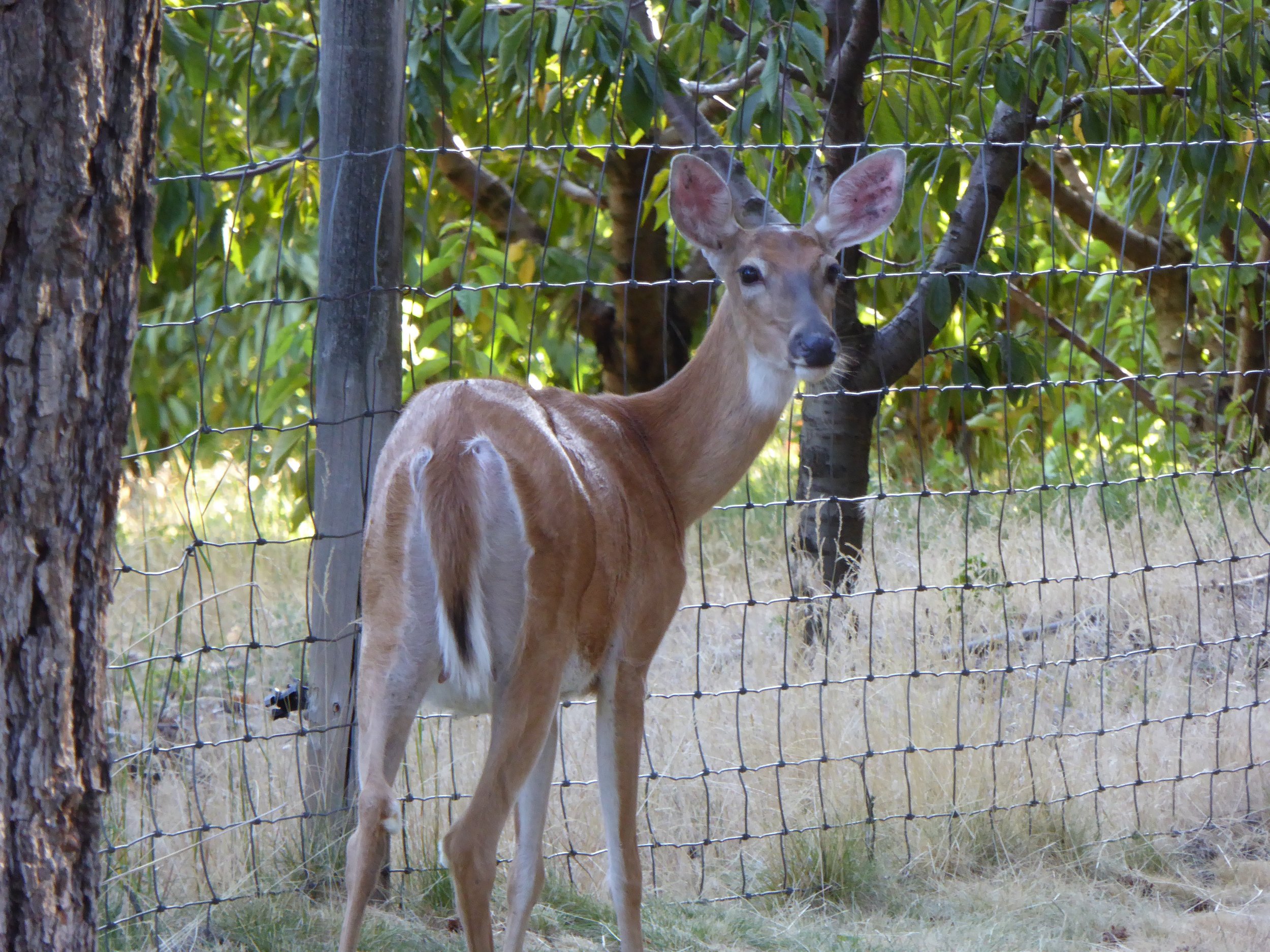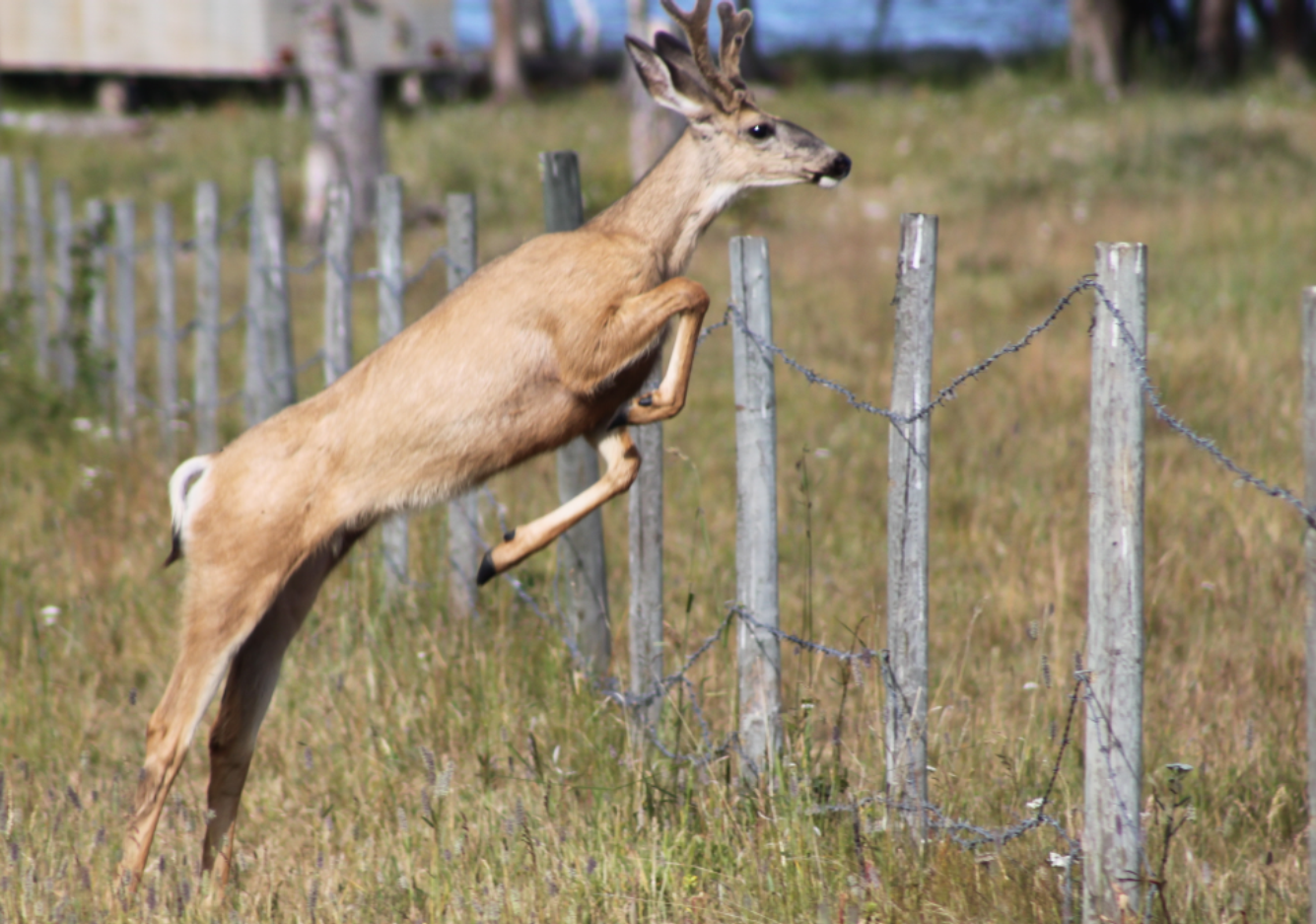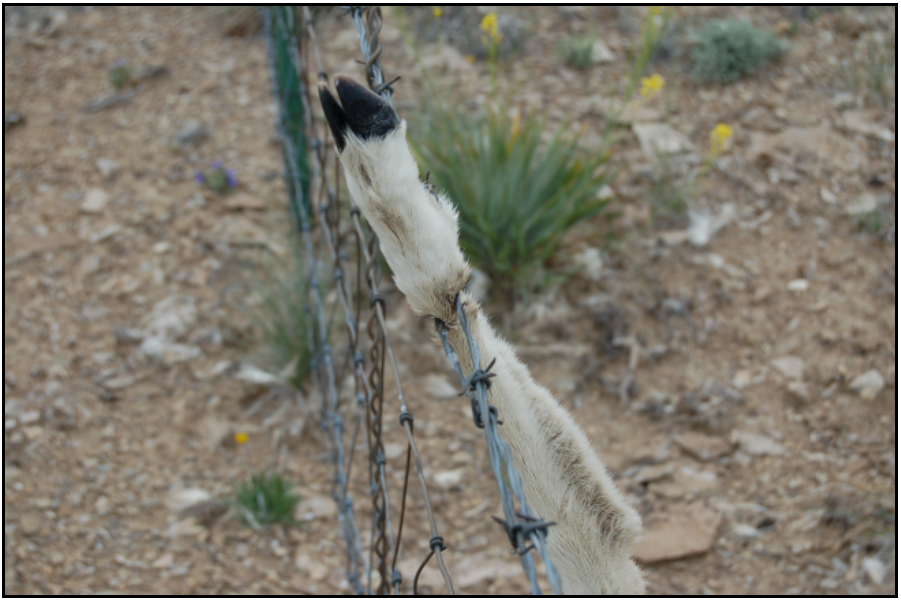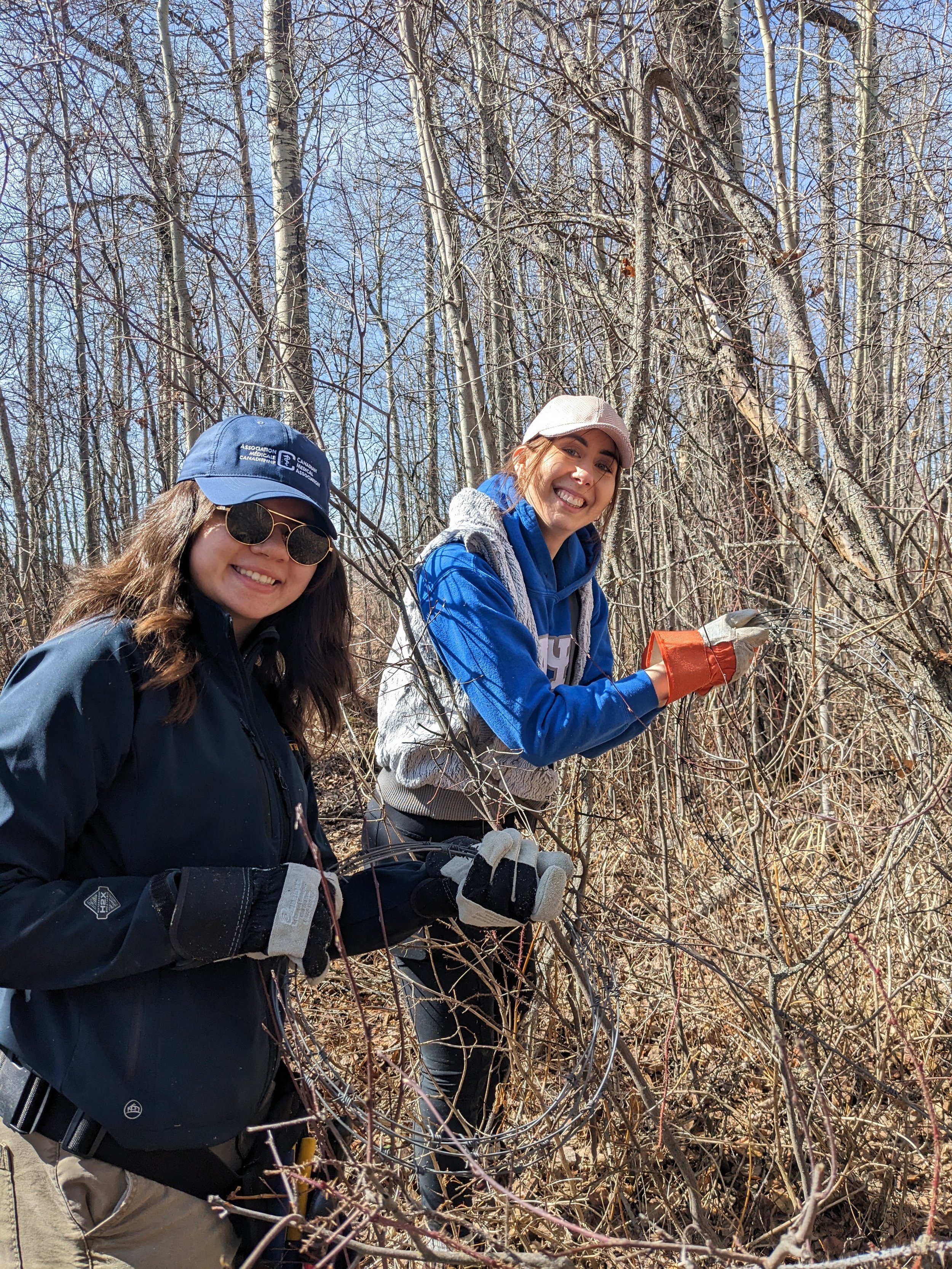Barbed wire fences are a common sight around Edmonton, seemingly as much a part of the parkland landscape as the wild rose. Fences are a useful and often necessary tool, but improperly designed fences present a hazard for wildlife. Fortunately, there are ways to make fencing wildlife friendly.
Why Are Fences a Hazard?
Fences create barriers which block wildlife during daily travel, disrupt migration, and prevent access to food and water. Some animals, like moose and deer, may be able to jump over fences but can become snared by wires that have been placed too high, too closely together, or too loosely. Entanglements often result in serious injury, infection, and even death. Even if adults are able to jump over, a fence can still be a barrier to calves and fawns thereby separating the young from their mothers. Without the protection of a parent, the young quickly succumb to exposure, dehydration, or predation.
While we might imagine that birds can avoid fences by simply flying over them, this is not always the case. A low flying bird may become entangled in wires or impaled on barbs. Birds of prey may collide with fences while pursuing prey, and water birds like ducks, geese, swans, and cranes can become entrapped in fences running across or near waterbodies. Grouse are also vulnerable to fence collisions, particularly with fences that have low visibility.
Removing Fences From EALT Conservation Lands
Fallen barbed wire fence at Pipestone Creek.
We work to remove unnecessary or broken-down fences from our conservation lands. This is usually done in the early spring or fall, when it is easier to find and remove barbed wire. Removal of fences improves the safety of the land not only for wildlife, but for human visitors too – nothing ruins a hike faster than tripping over a fallen wire.
EALT volunteers tackled two projects this spring to remove hazardous fences from our lands. There was a section of old fencing at JBJ McDonald that had likely been used to corral cattle but now served no purpose on our newest conservation land. Worse, it had become overgrown by brush, making it poorly visible and highly hazardous to travelling wildlife. We also addressed an old boundary fence at Pipestone Creek that had fallen and become partially buried, presenting a serious tripping hazard for animals and hikers alike. Armed with fence pliers, heavy duty gloves, and no small amount of elbow grease, our volunteers removed an approximate total of 1260 meters of barbed wire from these two properties! We will return to JBJ McDonald later this fall to remove another troublesome fence near Lily Lake. Thanks to the Edmonton Community Foundation and Alberta Fish and Game Association for grants supporting these projects!

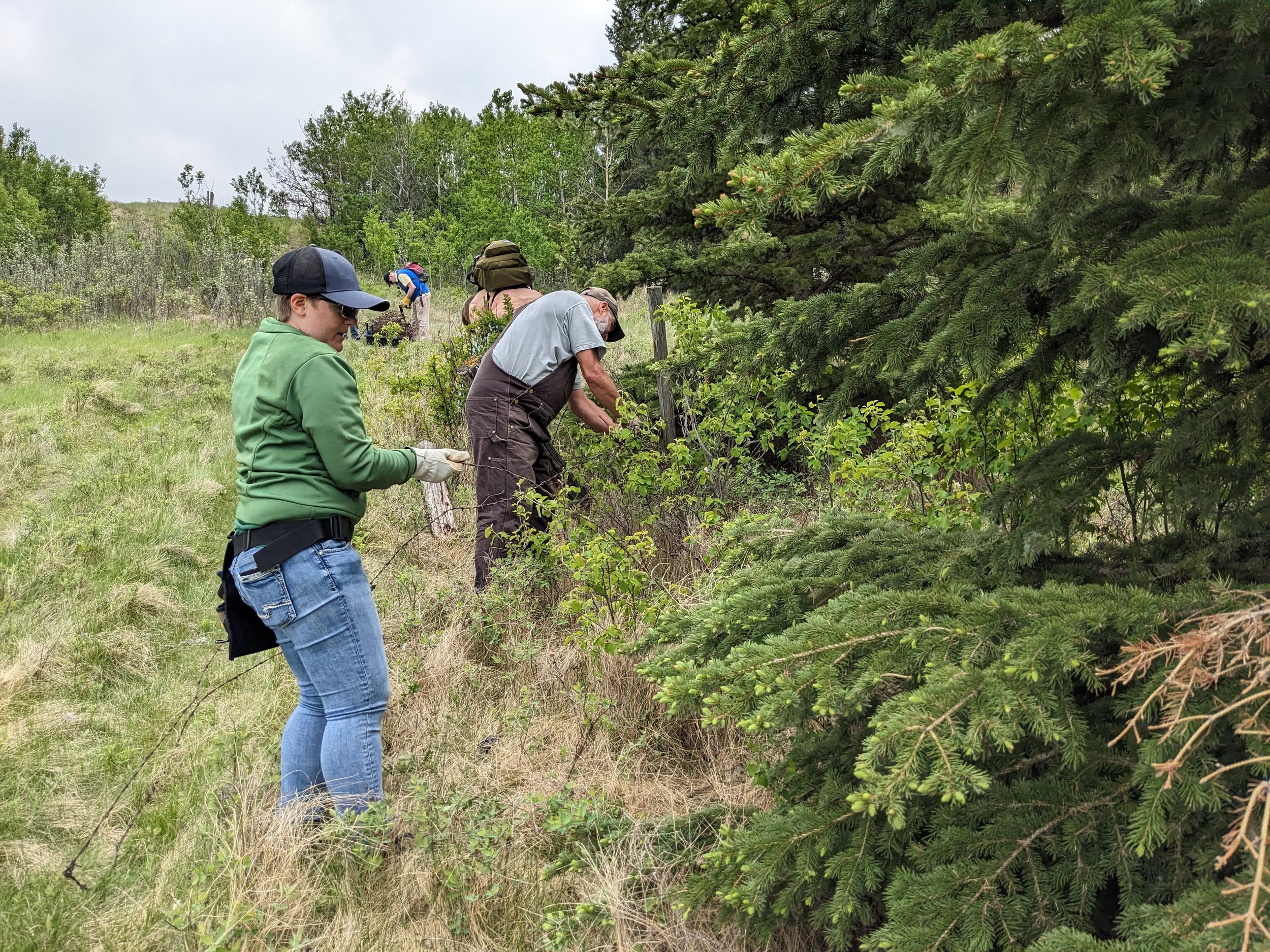
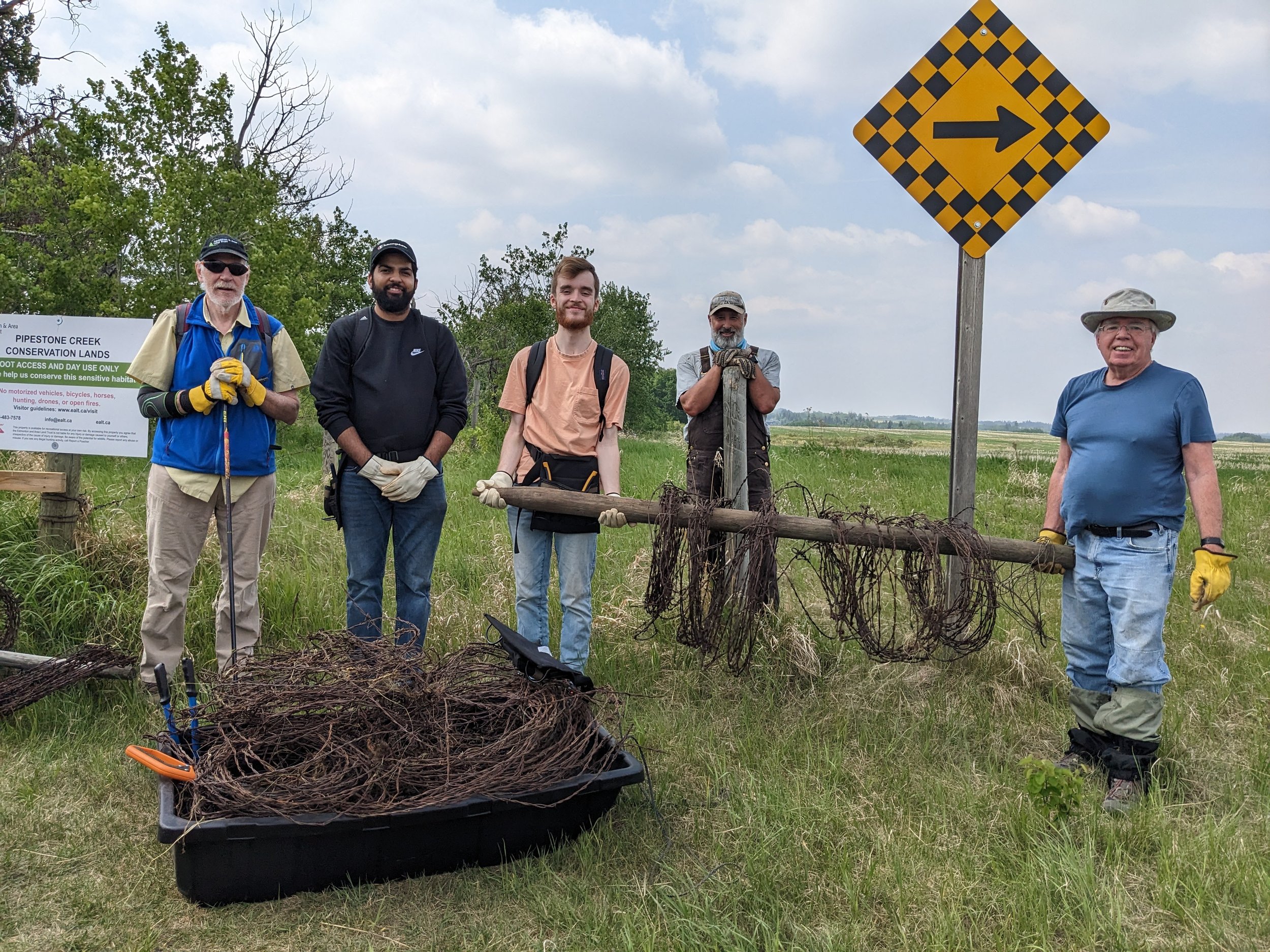
Wildlife Friendly Fences
It’s not always possible to remove all fencing. Fences serve many important functions, like containing livestock, marking property boundaries, and deterring trespassing and poaching. However, fences can be designed to greatly reduce the hazards to wildlife. Use the following tips to create wildlife friendly fences:
Installing fence reflectors at Smith-Blackburn Homestead.
Only place fences when they are necessary. Whenever possible, design fences to allow free travel through important corridors and habitats.
Use only three wires. The top wire should be no higher than 40” from the ground and the bottom wire no less than 18” from the ground. This type of fence allows wildlife to cross over and under the wires while still acting as an effective barrier to unauthorized access.
Replace barbed wire with smooth wire, especially the top and bottom wires.
Promptly repair or remove loose wires.
Increase fence visibility by adding reflectors or top rails. Reflectors are most needed in spots crossing over water, and gaps in forest cover.
Get Involved!
No fences? No problem! There are still many ways that you can help make habitat safer for wildlife:
Join a fence removal event at an EALT conservation land.
Become a Conservation Land Steward. These volunteers help monitor fence conditions, perform small repairs, and report additional hazards. Conservation Land Stewards are integral to EALT’s stewardship work and ensure safe habitat for wildlife.
Survey your property for potential hazards to wildlife. Place decals on windows to avoid bird collisions, cover window wells and rain barrels to keep wildlife from falling in, and cover dryer and stove vents to prevent access by wildlife.
Upcoming volunteer opportunities are posted on our events page, and you can sign up for our volunteer newsletter to be notified about events. We hope to see you out there!

